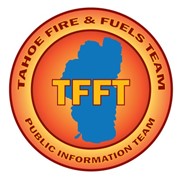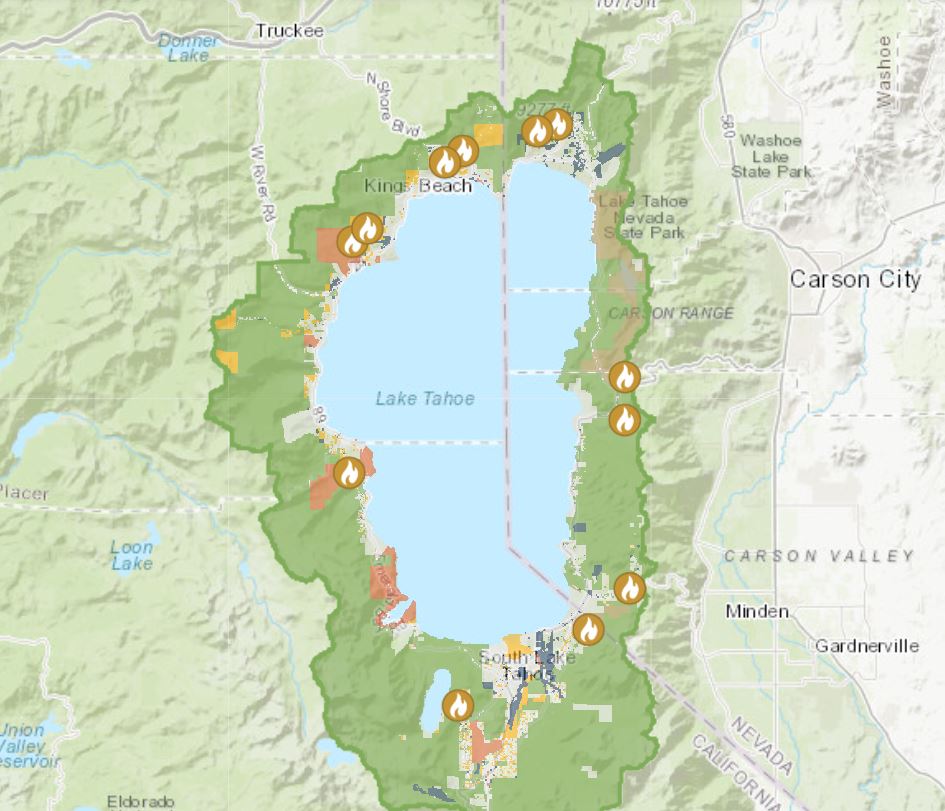Lake Tahoe agencies continue prescribed fire operations

Contact: USDA Forest Service, Lisa Herron 530-721-3898 or
LAKE TAHOE, Calif./Nev., Nov. 14, 2022 – Members of the Tahoe Fire & Fuels Team (TFFT) will continue conducting prescribed fire operations this week in the Lake Tahoe Basin. If conditions and weather remain favorable, California State Parks, Nevada Division of Forestry, North Lake Tahoe and Tahoe Douglas fire protection districts, and the USDA Forest Service Lake Tahoe Basin Management Unit will be burning piles in numerous locations. Smoke will be present. A map with project details is available for viewing at Tahoe Living With Fire.
Prescribed fires are an important tool used by land managers to help protect communities by removing excess vegetation (fuels) that can feed wildland fires. Burning excess vegetation also benefits forest health by making room for new growth which provides forage for wildlife, recycles nutrients back into the soil, and helps reduce the spread of insects and disease in forests.
Fall and winter typically bring cooler temperatures and precipitation, which are ideal for conducting prescribed fires. Each operation follows a specialized burn plan, which considers temperature, humidity, wind, vegetation moisture, and smoke dispersal conditions. All this information is used to decide when and where to burn.
Prescribed fire managers use different methods to reintroduce low-intensity fire into forests including pile, broadcast, and understory burning. Pile burning involves burning slash piles that are constructed by hand or mechanical equipment. Broadcast and understory burning use low-intensity fire across the ground to remove fuels under specific environmental conditions with fire confined to a predetermined area. Prescribed fires are meant to mimic naturally occurring fire, which is an essential part of many different ecosystems, and produces fire behavior and fire characteristics required to attain resource management objectives.
Smoke from prescribed fire operations is normal and may continue for several days after an ignition depending on the project size, conditions, and weather. Prescribed fire smoke is generally less intense and of much shorter duration than smoke produced by unwanted wildfires. “If prescribed fire smoke were equivalent to lighting a match, then wildfire smoke would be like lighting a bonfire,” said Washoe County Air Quality Specialist, Brendan Schneider.
Prior to prescribed fire ignition, there is close coordination with local and state air quality agencies to monitor weather for favorable conditions that can disperse smoke. Crews conduct test burns before igniting larger areas to verify how well the vegetation is consumed along with how the smoke rises and disperses before proceeding. Signs are posted on roadways in areas affected by prescribed fire operations, email notifications are sent to the prescribed fire notification list, and the local fire information line at 530-543-2816 is updated. The TFFT gives as much advance notice as possible before burning, but some operations may be conducted on short notice due to the small window of opportunity for implementing these projects.
To be added to the prescribed fire notification list, send an email request to
Visit, Tahoe Living With Fire to get prepared, get informed, and get involved.
